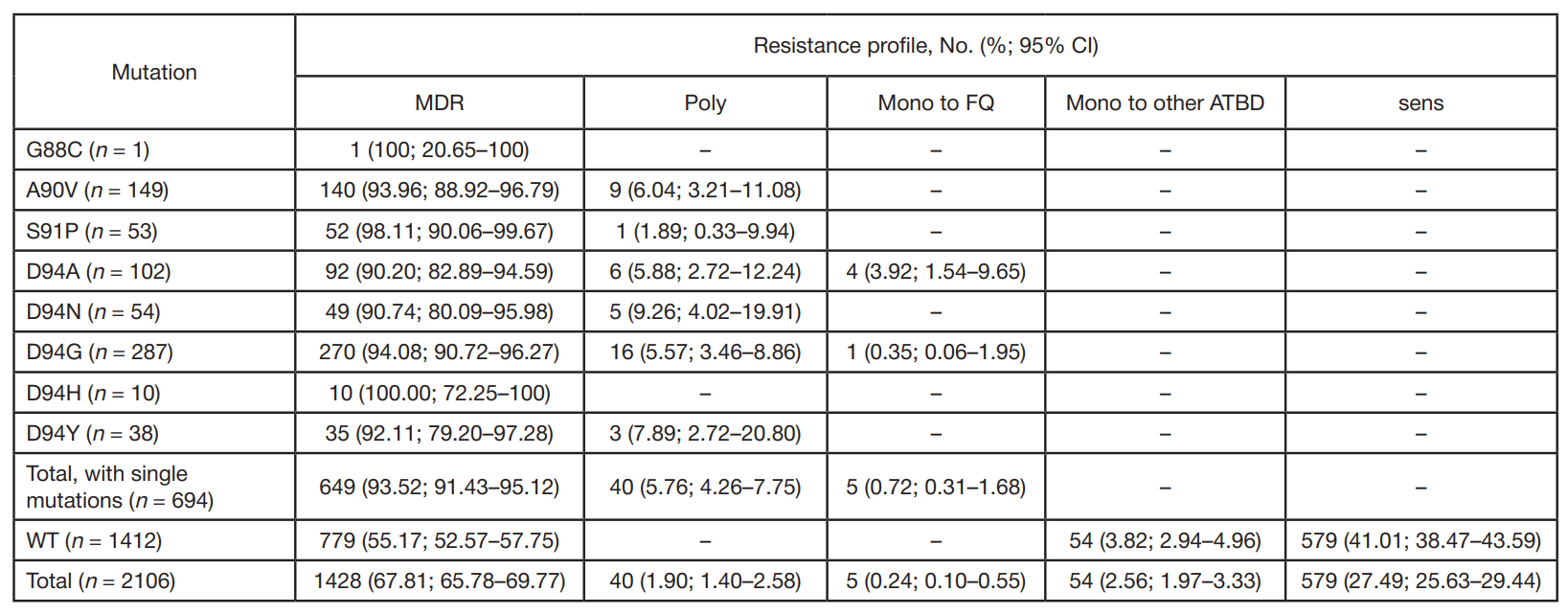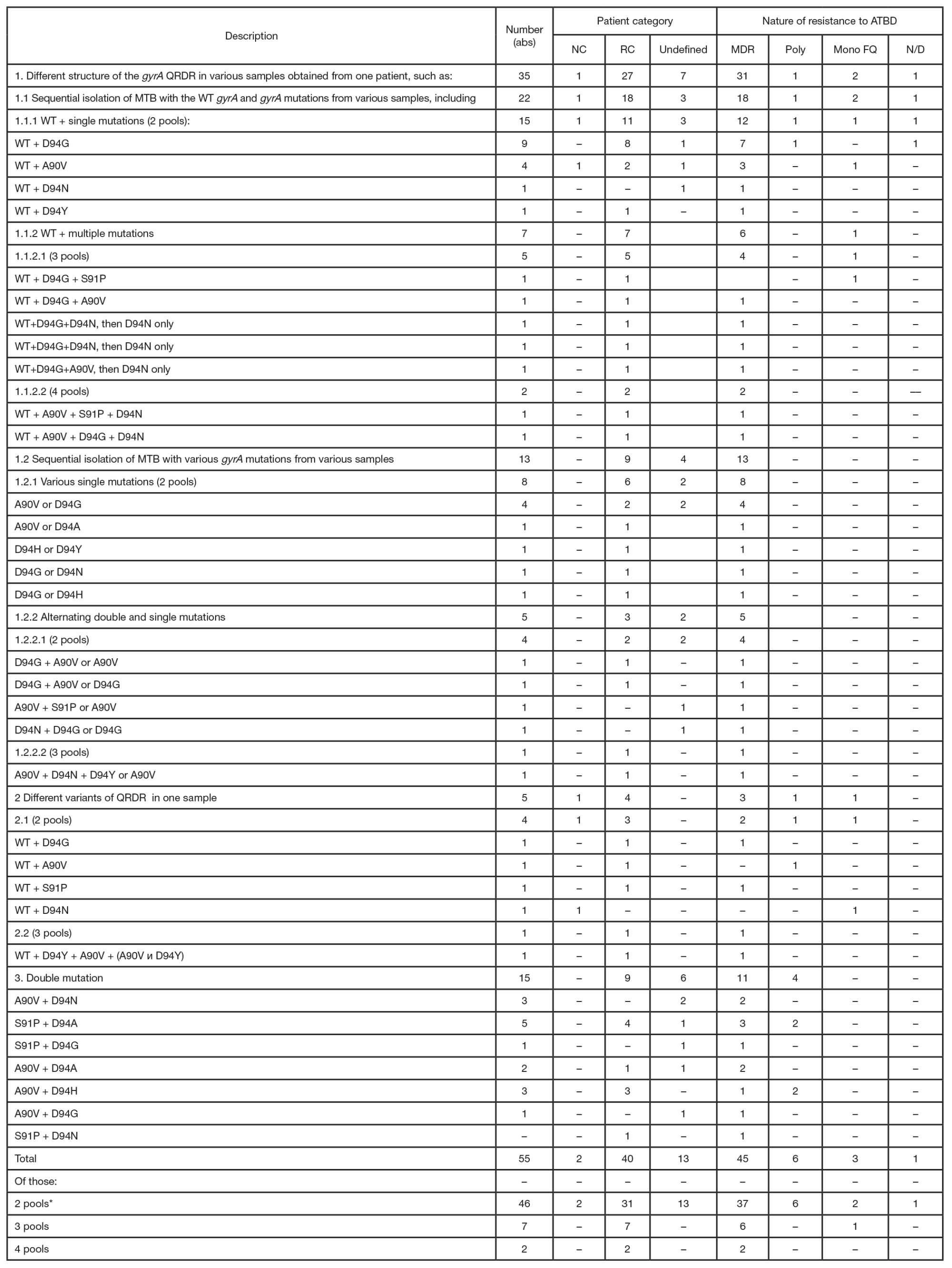
This article is an open access article distributed under the terms and conditions of the Creative Commons Attribution license (CC BY).
ORIGINAL RESEARCH
The nature of genotypic resistance to fluoroquinolones in Mycobacterium tuberculosis circulating in Russian Federation
Central Tuberculosis Research Institute, Moscow, Russia
Correspondence should be addressed: Sophia Nikolayevna Andreevskaya
Yauzskaya Alleya, 2, str. 1А, Moscow, 107564, Russia; ur.liam@aifosdna
Funding: the study was conducted as part of the State Assignment № 122041100246-3 for the Central Tuberculosis Research Institute, “Intra- and Inter- species Polymorphism of Mycobacteria in Patients with Tuberculosis and Mycobacteriosis Who Receive Specific Therapy”.
Author contribution: Ergeshov A, Chernousova LN — study design; Larionova EE, Kiseleva EA — data acquisition; Smirnova TG — data analysis; Andreevskaya SN — manuscript writing, literature review; all authors contributed to the discussion.





